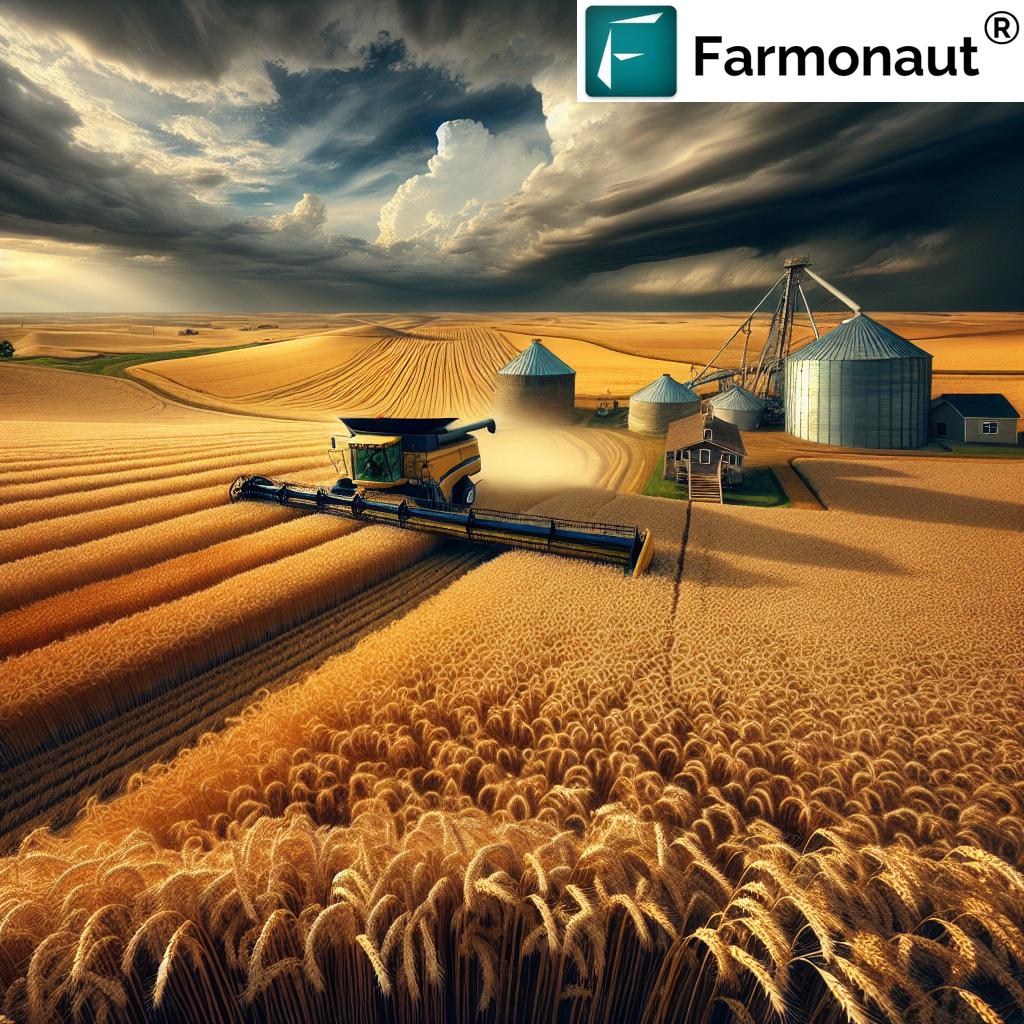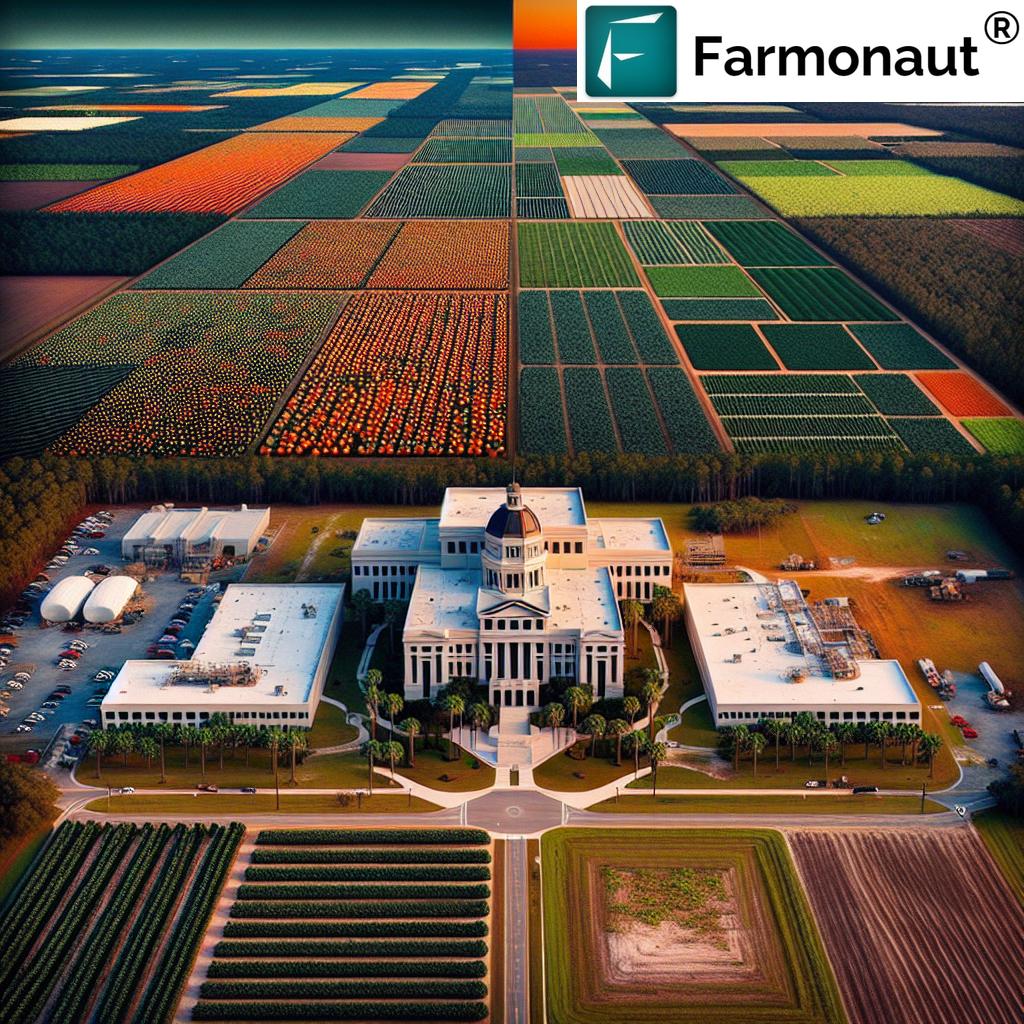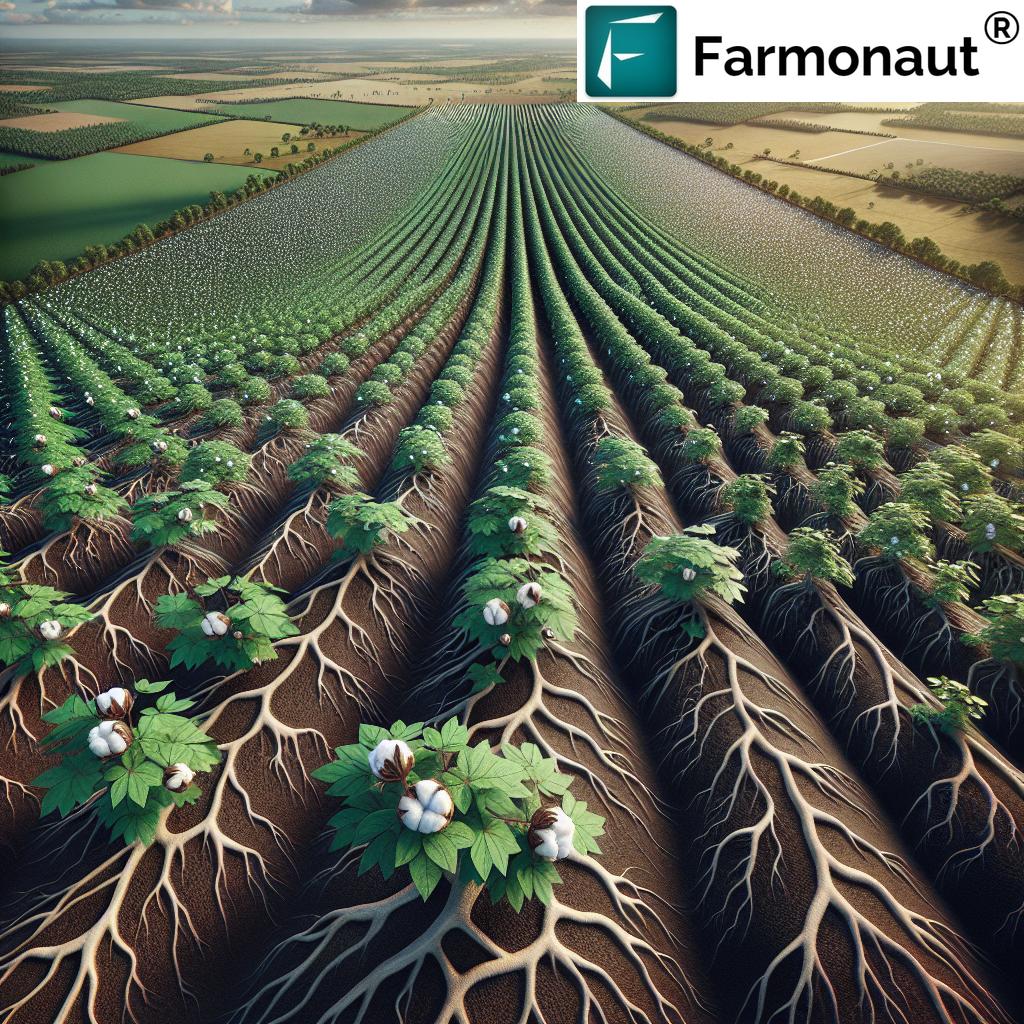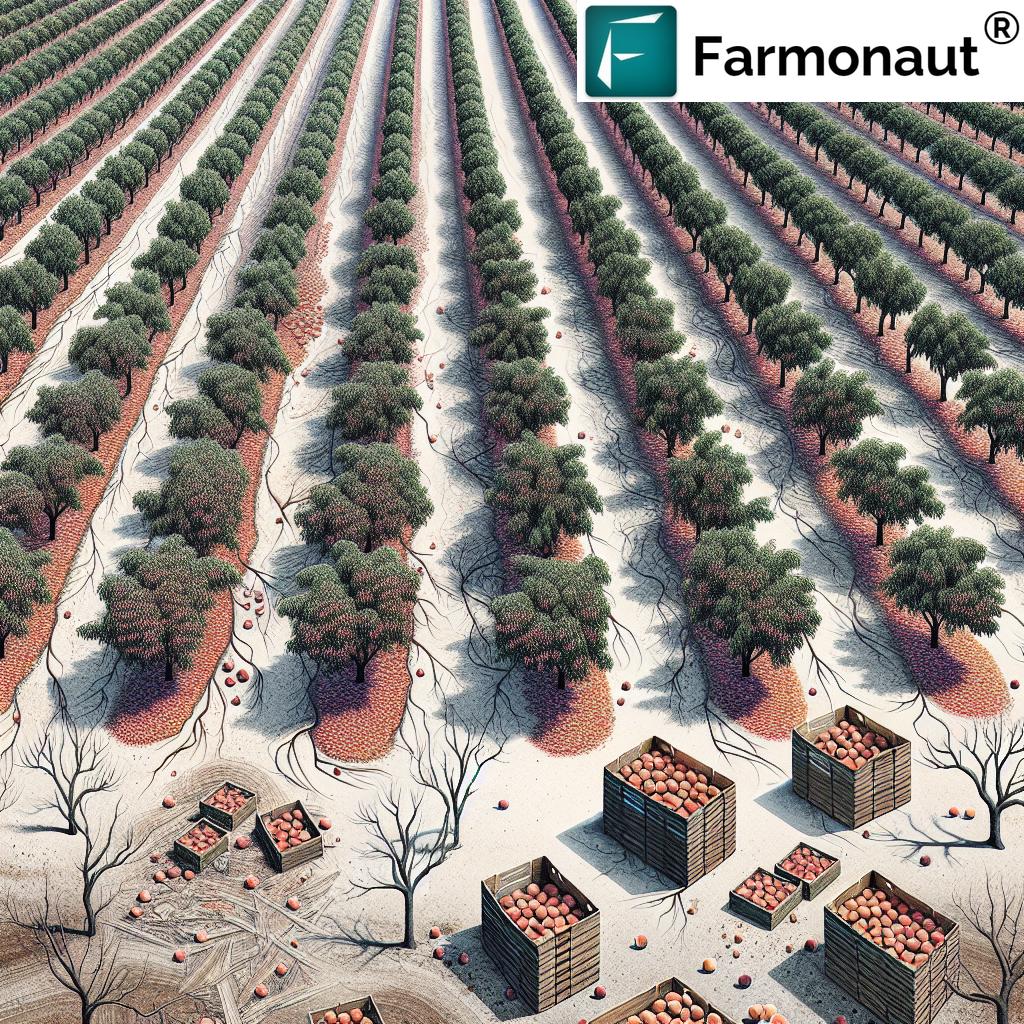AI Cotton Picker: Control Aphid in Alabama Cotton Field
“AI cotton pickers can increase Alabama cotton field efficiency by up to 30% through targeted aphid control.”
Introduction: The Transformative Shift in Alabama Cotton Fields
Welcome to a new era in cotton farming, where AI cotton picker technology is revolutionizing pest management and harvest efficiency in the Alabama cotton field. As we move further into 2025, a host of advanced innovations are tackling persistent challenges—particularly the threat of aphid cotton infestations. These small insects represent a significant obstacle for farmers seeking higher yield, fiber quality, and sustainable agricultural practices.
The intersection of technology and traditional knowledge is now shaping the future of cotton production in the Alabama cotton belt, which is a critical component of the state’s agricultural economy. This blog explores how cutting-edge AI-driven solutions—from early aphid detection via drones and sensors, to autonomous AI cotton pickers—are optimizing crop management, reducing costs, and promoting a sustainable future for Alabama’s cotton landscape.
The Alabama Cotton Belt: Landscape and Economic Importance
Situated in the heart of the Alabama cotton belt, the state’s cotton fields represent an integral part of not just the economy, but also its cultural identity. The fertile soils, favorable climate, and deeply rooted farming traditions allow Alabama to consistently rank among the leading cotton-producing states in the United States. Cotton farming here is more than a business; it is a critical component of rural livelihoods and local economies.
Yet, this agricultural landscape is witnessing a transformative shift in response to persistent challenges: crop pressures from pests, changing weather patterns, and the unyielding demand for higher fiber quality. As aphids persist as one of the primary pests affecting crops, the need for innovative, efficient, and sustainable solutions has never been greater.
Aphid in Cotton: A Persistent Threat to Alabama Cotton Fields
The aphid in cotton fields poses a significant threat to both yield and quality. Aphids are small, sap-sucking insects that feed primarily on the phloem of cotton plants. In Alabama, “aphid cotton” is an ongoing concern, as these pests:
- Weaken plants by sucking vital sap, reducing their vigor.
- Transmit viral diseases which can further damage the crop.
- Excrete “honeydew,” leading to the growth of sooty mold and additional fiber quality degradation.
Unchecked aphid infestations represent a persistent challenge—causing both immediate and long-lasting impacts on cotton yield and fiber quality. The economic losses are not limited to reduced output but also extend to lower market value due to compromised lint, increased input costs, and compromised reputation for Alabama-grown cotton.
“Advanced AI pest management reduces aphid infestations in cotton fields by as much as 40%, boosting sustainable yields.”
Traditional Pest Management Strategies for Aphids
Traditionally, Alabama cotton farmers have relied on several strategies to control aphids, including:
- Chemical Insecticides: Quick and widespread application, but associated with chemical resistance and environmental impact.
- Crop Rotation: Rotating cotton with non-host crops to break the pest’s life cycle.
- Resistant Varieties: Planting cotton types bred for aphid resistance.
- Manual Scouting: Labor-intensive field scouting to identify hotspots for targeted intervention.
While these methods have been effective to an extent, they are increasingly challenged by chemical resistance, rising costs of labor, and environmental sustainability concerns. The dependence on traditional pest control solutions is now giving way to more advanced, technology-driven practices designed for efficiency and long-term viability.
Rising Challenges: Chemical Resistance and Labor Shortages
As aphids adapt and develop resistance to many insecticides, Alabama cotton farmers find themselves facing ongoing challenges:
- Chemical Resistance: Overuse of certain insecticides has led to resistance among aphid populations, requiring higher doses or new chemicals, both of which increase costs and environmental risks.
- Labor Shortages: Manual scouting and spraying are labor-intensive tasks; fluctuations in labor availability often result in delays, inefficiency, and increased crop loss.
- Environmental Concerns: Chemical overspray affects beneficial insects, pollinators, and the broader ecosystem—fueling the demand for more sustainable approaches.
Cotton producers in Alabama are, therefore, increasingly pushing for methods that offer precision, sustainability, and cost-effectiveness.
Technology and Innovation: The Rise of AI in Cotton Farming
The move toward technology-driven solutions in Alabama cotton farming marks a critical shift in both pest management and harvesting. AI-driven systems and precision agriculture techniques are at the forefront of this transformation, enabling:
- Real-time Monitoring: Drones, satellites, and remote sensors monitor aphid populations, crop health, and field conditions.
- AI-based Image Recognition: Advanced algorithms analyze aerial imagery, identifying hotspots of aphid activity for targeted intervention.
- Automated Decision-Making: AI platforms recommend when and where to apply treatments, reducing waste and optimizing timing for maximum impact.
With these advances, Alabama is set to become a regional benchmark for tech-enabled cotton production, minimizing losses and maximizing sustainability for future generations.
AI Cotton Picker: Redefining Pest Management and Harvesting in 2025
An AI cotton picker is no longer a futuristic concept—it is actively redefining how Alabama cotton fields are managed. Here is how autonomous, AI-enabled cotton pickers are revolutionizing both pest management and harvesting:
-
Dual Functionality: Modern AI cotton pickers are equipped with machine vision systems capable of:
- Identifying optimal picking times for each area of the field, considering real-time crop health.
- Spotting aphid hotspots and other pest infestations as they harvest.
-
Precision Harvesting: By navigating complex field terrains and differentiating plant material from ripe cotton bolls, these machines ensure:
- Minimal crop damage, improved fiber quality, and higher harvesting efficiency.
- Automated sorting and yield mapping for optimal output.
-
Data Collection for Feedback: AI cotton pickers collect vast amounts of data on every pass:
- Cotton yield per acre, plant health variations, and locations of aphid infestations.
- This data is crucial for informing future planting, pest control, and resource allocation decisions.
With 24/7 capabilities and the ability to operate in varied weather, AI cotton pickers move Alabama’s cotton economy forward by boosting efficiency and addressing labor shortages.
Drone Monitoring and AI for Early Aphid Detection
A central tenet of integrated pest management (IPM) in Alabama’s cotton fields is early detection. Modern systems now employ drones, remote sensors, and AI-based image recognition to transform how aphid threats are managed.
- How It Works: Drones equipped with multispectral cameras fly over the field, capturing high-definition aerial imagery.
- AI Algorithms: These images are run through advanced algorithms that analyze vegetative indices, plant stress signatures, and color patterns to identify aphid populations and other tell-tale signs of infestations.
- Targeted Hotspots: AI pinpoints hotspots where aphid numbers are surging, enabling farmers to act quickly and intervene precisely.
The result? Farmers can now allocate resources—labor, insecticides, and time—only where they are needed most, thereby reducing costs and improving the sustainability of the entire operation.
Precision Interventions: Targeted Aphid Control
Once aphid hotspots are detected, AI systems direct precision interventions. These may include:
- Localized Aerosol Application: Drones or ground vehicles apply minimal insecticide only to affected areas, lowering chemical use by up to 45% compared to traditional blanket spraying.
- Variable Rate Spraying: Smart machines automatically adjust the dosage based on real-time infestation density.
- Alternative Control Methods: Where possible, AI can recommend deploying biological control agents or other sustainable strategies as part of an evolving IPM plan.
This approach dramatically improves overall efficiency, reduces chemical costs, and lessens environmental impact—ushering in a new age of responsible pest management.
Comparative Impact Table: Traditional vs. AI-Enabled Aphid Control in Alabama Cotton Fields
Harvesting Cotton with Autonomous AI Cotton Pickers
Harvesting is one of the most labor-intensive and variable stages of cotton farming. AI cotton pickers address this challenge by:
- Operating autonomously, regardless of labor availability or weather variability.
- Navigating field layouts and adapting picking strategy in real time for optimal efficiency.
- Sorting harvested cotton to segregate material affected by aphids, thereby minimizing quality degradation and supporting better pricing at market.
- Providing detailed maps and models of yield trends, fiber quality, and localized pest threats for continuous improvement in management practices.
This advanced mechanized approach is revolutionizing cotton production in Alabama, reducing loss from delayed harvests, wild labor fluctuations, and poor pest control response.
Environmental Sustainability: Reducing Chemical Use and Improving Farm Health
Sustainability is now a critical requirement for cotton producers—not just as a response to regulatory pressure, but as a necessity for long-term environmental stewardship. AI-driven systems support sustainability in multiple ways:
-
Reducing Chemical Use: Targeted application and early detection enable:
- Up to 45% reduction in overall insecticide use
- Mitigated risk of environmental contamination and off-target effects
- Improving Cotton Quality: Rapid harvesting and targeted pest control preserve fiber quality, which is increasingly demanded by global buyers.
- Soil and Water Health: Reduced chemical runoff supports improved soil biodiversity and maintains clean water sources for the local community.
- Traceability: Implementing blockchain-based traceability solutions ensures transparent and verifiable records, a crucial factor in the premium cotton export industry.
For those interested in transparent, traceable cotton production, Farmonaut’s Product Traceability solution can deliver both supply chain integrity and enhanced consumer trust.
Integrating Farmonaut Technologies for Cotton Field Efficiency
At Farmonaut, we provide satellite-driven insights, AI-driven advisory, and blockchain tools specifically designed to empower farmers in Alabama and beyond. Here’s how our platform can support your cotton operation:
- Satellite-Based Monitoring: Multispectral imagery reveals crop stress, aphid infestations, and variations in plant health across vast Alabama fields.
- Jeevn AI Advisory: Real-time, AI-powered agronomic recommendations to optimize yield, address weather variability, and minimize aphid impact.
- Environmental Impact Monitoring: Our platform tracks real-time carbon footprinting, fostering sustainable farming practices by making environmental stewardship measurable and actionable.
- Resource and Fleet Optimization: Fleet management tools help Alabama cotton growers coordinate vehicles and equipment for efficient field operations, reducing idle times and operational costs.
- API Integration: Developers and agribusinesses can integrate Farmonaut’s API for aphid detection and cotton health insights directly into their own dashboards—see our API Developer Docs for more details.
Our solutions are tailored for individuals and enterprises of all scales, from small Alabama farms to state-level agricultural portfolios—driving innovation towards a smarter, more sustainable future for cotton.
For large scale farm management and continuous health monitoring of crops (including cotton), visit our Farmonaut large-scale farm management platform. Gain access to dashboard-driven insights, waste reduction tools, and actionable advisories.
2025 and Beyond: The Future of Alabama’s Cotton Fields
Looking ahead, Alabama’s cotton landscape is witnessing a convergence of smart machines, sensors, and data-driven methodologies—all aimed at tackling persistent aphid infestations, optimizing harvest, and promoting lasting sustainability.
- Continuous Algorithm Refinement: Ongoing improvements in machine learning will make pest prediction, intervention timing, and yield forecasting even more precise.
- Affordable Access: Satellite-driven platforms like Farmonaut lower the cost barrier—no expensive hardware is required, making high-tech farming inclusive for Alabama’s diverse cotton sector.
- Education and Policy: Adoption of AI technologies will be accelerated by training, policy incentives, and cooperative extension support—ensuring that sustainable, profitable cotton farming thrives across the state.
Moreover, as climate variability and global market demands continue to shape the cotton economy in 2025 and beyond, the synergy between AI pest management and mechanized harvesting will represent the key to resilient, productive Alabama cotton fields.
Farmonaut Subscription Plans for Agricultural Monitoring
Access affordable, scalable cotton monitoring and aphid-detection via Farmonaut’s subscription model:
Frequently Asked Questions
What is an AI cotton picker and how does it work?
An AI cotton picker is an autonomous or semi-autonomous mechanized harvester equipped with advanced machine vision and AI. It can detect optimal harvesting times, distinguish ripe cotton bolls from other plant material, and often integrate sensors to identify aphid infestations for targeted pest management. By operating with minimal human intervention and using precision navigation, it achieves higher efficiency and reduces crop loss.
How does AI technology help control aphids in cotton fields?
AI systems use drones, satellite imagery, and remote sensors to map aphid hotspots. Algorithms analyze data to flag areas with high aphid activity, recommending where and when to apply insecticides or alternative controls. This ensures targeted intervention, reducing pesticide use and promoting environmental sustainability.
Is using an AI cotton picker cost-effective compared to traditional methods?
Yes, while initial investments in AI cotton pickers can be higher, operational costs decline rapidly because of reduced labor hours, lower chemical usage, and less crop loss. Additionally, improved fiber quality leads to better market prices, and sustainability incentives may further enhance the economic value.
Can Farmonaut solutions be integrated into existing farm management systems?
Absolutely. We provide APIs and platform access that integrate with most farm management software in use today. This allows seamless adoption of satellite monitoring, AI pest detection, and environmental impact tracking for cotton fields across Alabama and beyond.
Are AI cotton pickers suitable for small to medium farms in Alabama?
AI solutions, especially those driven by cloud and satellite-based platforms, are increasingly designed to be scalable. Combined with advances in robotics, this makes them suitable and cost-effective for small and medium operations in the Alabama cotton belt, not just large corporate farms.
What sustainable farming benefits can be expected from adopting AI-enabled pest management?
Targeted pest control minimizes overapplication of chemicals, reduces negative environmental impact, and preserves beneficial insect populations. Moreover, enhanced crop health leads to better soil management, improved water quality, and higher, more stable yields—supporting sustainable agriculture in Alabama.
Conclusion: AI Cotton Pickers and Sustainable Pest Management
The battle against aphid in cotton fields is entering a new phase in 2025—one driven by AI-powered innovation and a commitment to both yield and environmental stewardship. AI cotton pickers are the embodiment of this transformative shift: uniting real-time monitoring, targeted pest control, and precision harvesting that collectively redefine Alabama’s cotton production landscape.
Through the combination of advanced technology, actionable data, and a strong focus on sustainability, farmers gain the tools they need to overcome persistent aphid threats, reduce resource use, and meet the quality demands of the global cotton industry—all while ensuring long-term profitability for their operations.
At Farmonaut, we are dedicated to making these technologies accessible, affordable, and practical for every stakeholder across Alabama and beyond. By embracing the AI revolution in cotton farming, our agricultural community is well-positioned to secure a prosperous and sustainable future—where every cotton field truly thrives.













